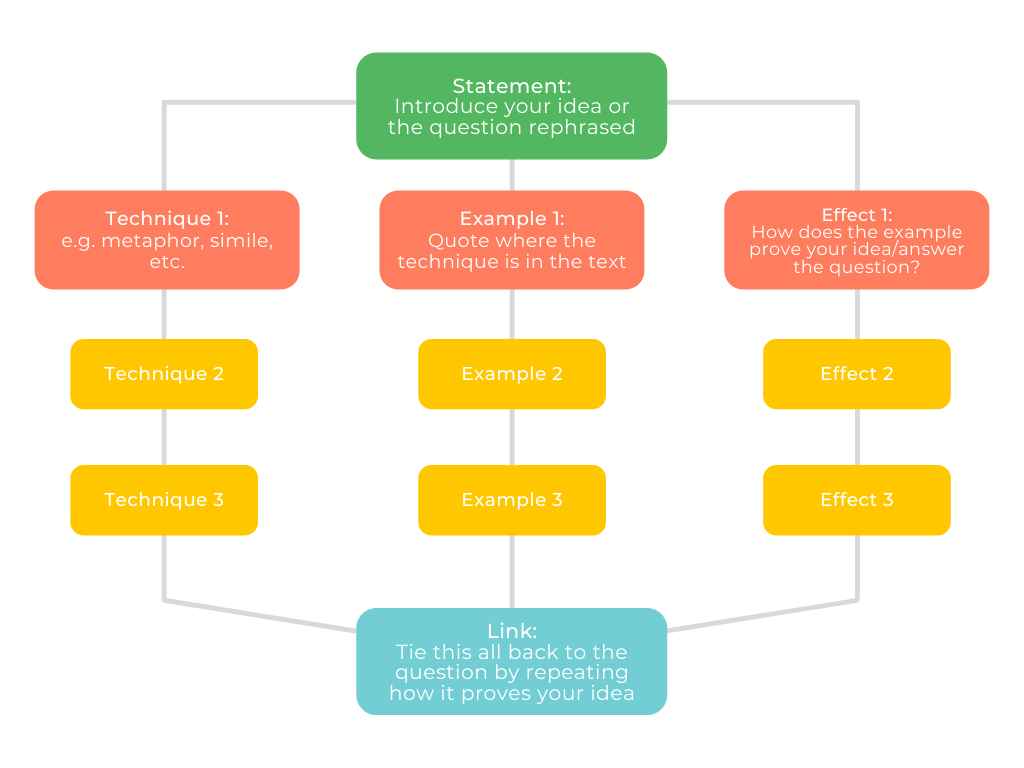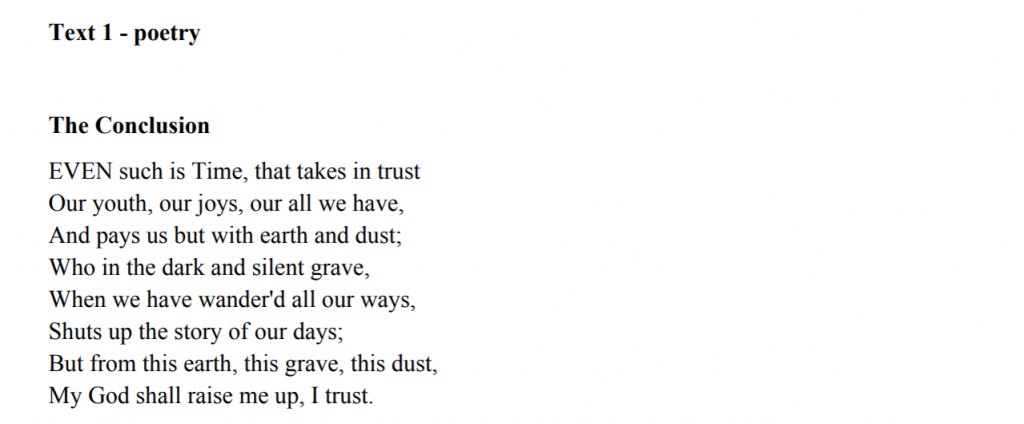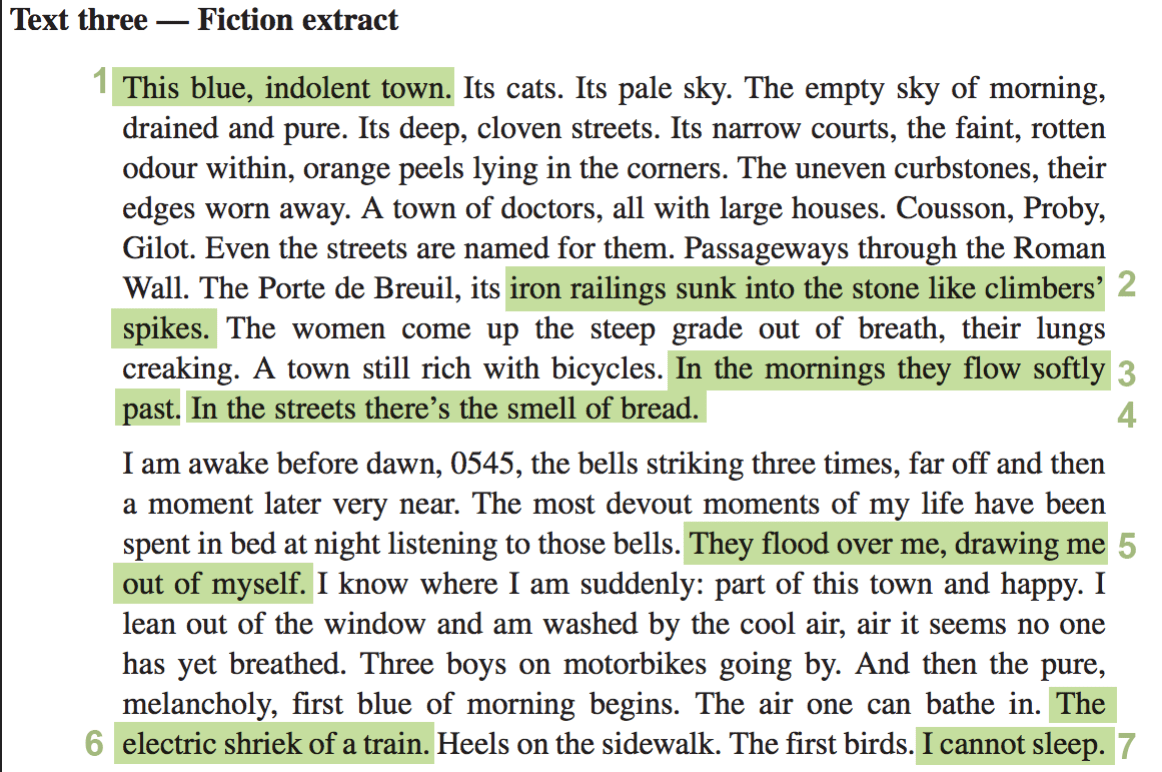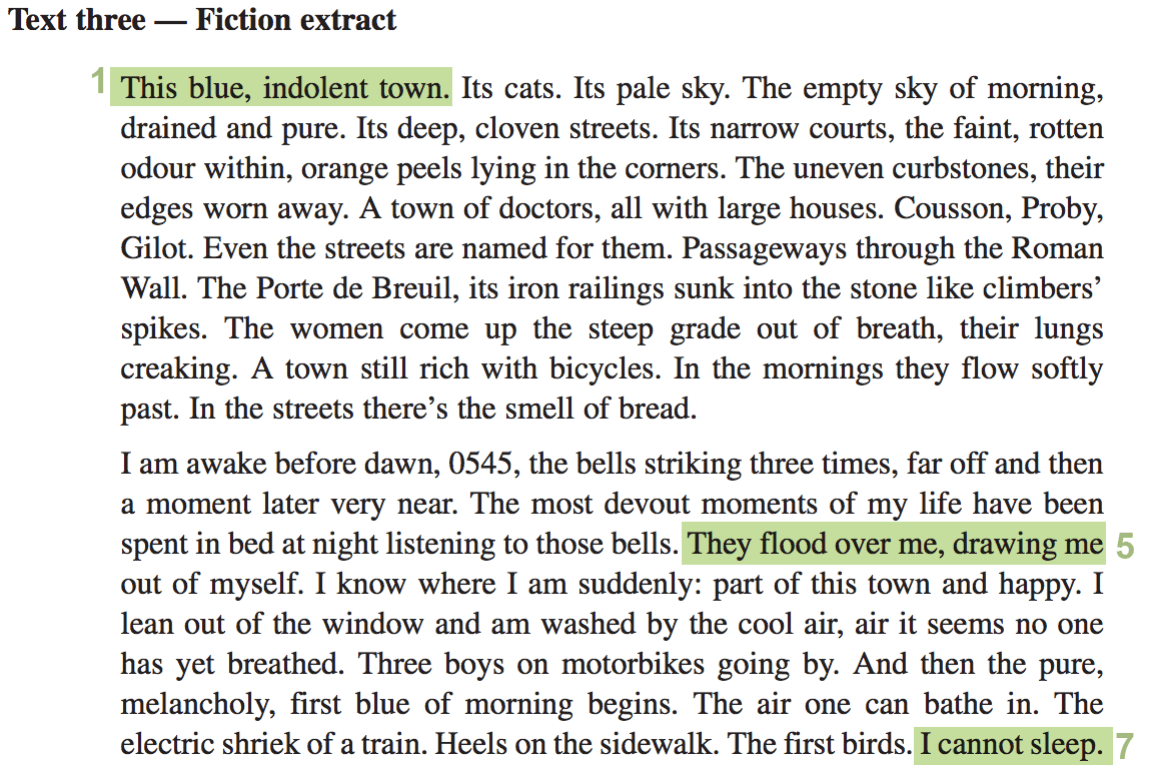
Hate HSC English unseen texts practice for Paper 1 because it’s so hard to study for?
You’re in luck! The good news is that there is a way you can prepare for it!
We’ve come out with a simple 6-step plan towards getting full marks in your HSC English Paper 1 unseen texts, including how to analyse texts, identify techniques, break down questions and craft a strong response!
So, what are you waiting for? It’s time to get some HSC English unseen texts practice!
English Paper 1 and Unseen Texts 101
Step 1: Read the unseen text critically
Step 2: Identify visual/literary techniques in the unseen text
Step 3: Read the unseen texts question and break it down
Step 4: Which techniques suit the unseen texts question?
Step 5: Answer with STEEL
Step 6: Try it out!
English Paper 1 and Unseen Texts 101
The first section of your the HSC English Exam Paper 1 is essentially your ‘unseen texts’ section.
The HSC English unseen texts section provides a selection of texts (the sample papers, provided by NESA, mention 7!) that you need to read/view, analyse, then answer short questions on.
The texts are generally all of different types (novel extracts, visual texts, poems, etc.) but will be linked to the Common Module, Texts and Human Experiences.
This means that even though you haven’t actually seen any of them before, you know what kind of information and themes you should be looking for in them!
This section makes up 20 marks of Paper 1, with a combination of questions worth anything from 3 to 7 marks each.
While the questions worth less marks are generally pretty easy, it’s these last 6 or 7 mark questions we need to really think about — these are the ones this article will mainly focus on.
Throughout the article we’ll be working through Example Question F and Text 7 from this sample HSC English paper.

Action Point:
Read the question and excerpt from the NESA Sample Paper carefully! If you want to, you can print out the excerpt to annotate it yourself.
Step 1: Read the Unseen Text Critically
The first and most important step is to read the text. It seems obvious, but reading the text is more than just looking at the words — you have to read it critically.
This means picking up on things that will be useful in your analysis, but not going into specifics yet.
Things you can pick up on in a first read include;
- Structure
- Tone
- Atmosphere
- Setting
- Point of view
- Character voice
- Themes
They’re simple enough, but these are the things that give a text its overall ‘feeling’ and will help you in analysing it. By knowing how a text ‘feels’, it’s easier to then pick up on more specific literary and visual techniques.
Our example has a few things that we can pick up on quickly in our first read through that help us figure out the ‘feel’ of the text.

The opening begins with a conversational tone, using first- and second- person in order to position the reader. It also starts with a humorous comparison between a well-known experience and the author’s personal experience.
Throughout much of the extract, the writer maintains a tone that is ironically comedic. In addition, the imagery is used to illustrate the writer’s familiarity with the locations he is writing about. In terms of structure, the last lines echo the opening ones in order to convey the author’s nostalgia.
Even though these are small things, they gives us a quick idea of how the text ‘feels’ and help us know where to look for techniques in the next step.
Action Point:
Step 1: Read through the text again and make your own notes!
Step 2: Think about other things jump out at you from the excerpt which set the scene and let you know what the text is about?
Step 2: Identify Visual/Literary Techniques in the Unseen Texts
As with any text you’re about to analyse, you need to find techniques to comment on — this means annotating!
Simply grab a highlighter or different coloured pen and begin to go through the text making note of techniques you could use in your analysis. At this point pick out any and all techniques you can find, but try to avoid any really weak ones.
If you need some help with this, check out this article for a list of literary techniques, or this one for visual techniques!
Here we’ve highlighted all of the strong techniques in the text that could be commented on in our analysis.
When annotating it’s a good idea to write what the technique is as well as a very brief description of how the technique is working or what it’s doing. Have a look at these annotations for our example text to see how it’s done!
1. Personification – indolent meaning lazy or inactive, presents the town as quiet or slow.
2. Simile – creates a sense that the railings are permanent and unmoving.
3. Descriptive language – adds to the sense of the town being slow paced.
4. Sense imagery – description of sense of smell to further reader immersion.
5. Figurative language/metaphor – implies the narrator is fully immersed in their own world and its sounds, etc.
6. Personification/aural imagery – used to break the tone of peace.
7. First person pronouns – creates personal link between readers and the narrator.
Action point:
Read through the text again and annotate it with the literary techniques you can see being used, along with a short description of what the technique is doing in the text.
Step 3: Read the Question and Break It Down
Now we have to look at what we’re actually being asked to do with the text.
Some people say to read the questions first, but most students find that it’s easier to answer a question if they go into it already having a few techniques in mind!
Having done that it’s important to break the question down to see exactly when we have to do to answer it. This is just like breaking down any English question, but because these questions are worth fewer marks, there are usually fewer components.
Going through the question and highlighting the key words makes it really easy to pick out just what you need to comment on in your answer! It also tells you what kind of techniques you’re going to want to be analysing in order to answer the question.
Having highlighted key points, let’s break down what each one means.
Analyse: The markers are looking for you to use techniques from the text to break down what the text is actually saying. The best way to tackle the example is by using the ‘TEE’ method to show how the text represents an overall idea.
Complex relationship: This simply means you’ll be looking at how one thing relates to another. It seems simple, but remember to refer to both parts of the relationship, otherwise the markers won’t know if you actually understand it!
People and communities: This is our relationship! Just make sure to mention people and the communities they’re in when you’re doing your analysis of the ‘complex relationship’ and you should be fine!
Portrayed effectively: The ‘portrayed’ part means that we want to be looking at specific examples from the text, meaning our techniques from before! The ‘effectively’ simply means we want to choose the strongest examples to prove our point/idea about ‘complex relationships’.
Action point:
After reading and annotating your text, read the question carefully, highlighting or underlining any key words. Find our more about analysing visual texts to make sure you’re prepared!
Step 4: Which techniques suit the unseen texts practice question?
Using the techniques you highlighted and annotated before, now’s the time to start thinking about which ones would work best to answer the question. This means you want to be looking for the strongest techniques of course, but you also have to consider how you can analyse them for the question.
If you’re looking at a question that wants you to analyse how people fear discovering new things, it’s not a good idea to choose a technique that is used to show a character enjoying discovery!
Make sure to keep the question in mind when choosing the techniques you’re going to use.
You’ll want about 3 techniques for a 5/6 mark question. Anything less and you won’t have enough to write about, anything more and you won’t be able to go into enough detail!
Our question focusses on the relationships between people and their communities, so we need to choose techniques that are used to ‘effectively portray’ that. Looking back at the techniques we highlighted, it’s pretty clear which three will work the best for this question.
Now’s a good time to quickly expand on our brief descriptions from before, so that we know exactly how we’re going to relate the technique to the question. This will help when we actually have to write our response.
- Personification – indolent meaning lazy or inactive, presents the town as quiet or slow. It immediately shows readers how the narrator perceives the town/community around them.
- Figurative language/metaphor – implies the narrator is fully immersed in their own world and its sounds, etc. Creates a sense that the community itself is ‘washing over’ the narrator and that they are happy with it.
- First person pronouns – creates personal link between readers and the narrator. The sentence shows that the narrator seems to wake with the town.
Action Point:
Expand with a brief description of your chosen techniques and relate them to the particular question you’re answering.
Step 5: Answer with STEEL
By now you’ve probably heard of the STEEL format a thousand times, but if not here’s a quick refresher on what the acronym means.

When answering short answer questions (see this HSC English past paper as an example) you don’t need to be quite as in-depth with your structuring, so generally it’s best to structure your response in a modified STEEL format like below.

Basically you’re repeating the TEE section three times, but only having one statement and link at each end. This allows you to get all the information down in a structured way without wasting time on extra statements or links! Remember, you’re only going for 5/6 marks so you don’t need to go into too much detail.
“The complex relationship between people and their communities is effectively portrayed in text three through its use of personification, figurative language and first person pronouns.
The opening sentence of the text employs personification as it describes the ‘indolent’ town, evoking a notion of the town as a slow-moving, quiet community. The negative connotations of the word prompt the audience to wonder what sort of relationship the narrator has with this ‘indolent’ town. This question is furthered when the narrator describes the tolling of the dawn bells, saying ‘They flood over me, drawing me out of myself.’, the figurative language suggesting that the town itself holds sway over the narrator. Audiences are thus made to feel that the narrator is more affected by the town than he lets on, the fact that the bells have such an impact on him implying a more complex relationship. Finally, the use of first person pronouns in the sentence ‘I cannot sleep.’ evokes a sense of the narrator almost being at one with the town, the fact that it is beginning to wake up in the early dawn meaning that he must rise too.
This combination of seemingly contrasting interactions between the narrator and his town are evidence of the fact that people’s relationships with their communities are often complex and contradictory. Though the narrator labels his town ‘indolent’ with heavy negative connotations, he also feels compelled to wake with it each morning, the use of personification, figurative language and personal pronouns thereby working together to show just how complex people’s relationships with their communities may be.”
And there you have it — one awesome response to an unseen texts practice question!
If you’re not a fan of the STEEL structure, there are other paragraph structures you can use like PETAL or TEEL!
Step 6: Try it out!
Now it’s your turn to get full marks for HSC English Unseen Texts in Paper 1! You’ve learned how to put together an awesome response, so give it a try.
Remember that the goal is to be able to do all of these steps in your head, but by practising and actually writing down your techniques, breaking down the question, etc. you make it much easier to repeat in an actual exam when completing Paper 1!
Here’s a text and a question, now it’s your turn to give it a go!


And that wraps up our guide to HSC English unseen texts practice in Paper 1 — good luck!
Looking for some past papers to help you study for Paper 1? Check out our master list of HSC English exam papers to get started!
Are you looking for some extra help with HSC English Paper 1?
We have an incredible team of HSC tutors and mentors!
We can help you master your HSC subject and ace your upcoming HSC English assessments with personalised lessons conducted one-on-one in your home or at one of our state of the art campuses in Hornsby or the Hills!
We’ve supported over 8,000 students over the last 11 years, and on average our students score mark improvements of over 20%!
To find out more and get started with an inspirational HSC tutor and mentor, get in touch today or give us a ring on 1300 267 888!
Maddison Leach completed her HSC in 2014, achieving an ATAR of 98.00 and Band 6 in all her subjects. She enjoys helping students through the academic and other aspects of school life, even though it sometimes makes her feel old. Maddison has had a passion for writing since her early teens, having had several short stories published before joining the world of blogging. She’s currently studying a Bachelor of Design at the University of Technology Sydney and spends most of her time trying not to get caught sketching people on trains.
Cameron Croese is a qualified English teacher, who has a Bachelor of Education (Secondary) / Bachelor of Arts (English) from Macquarie University and is currently undertaking a Masters of Education in Melbourne. A long-time Art of Smart coach, Cameron has supported over 60 students from Years 7 to 12! When not studying, Cameron is an avid writer, having won several awards for short stories, including the Alan Marshall Short Story Award.





